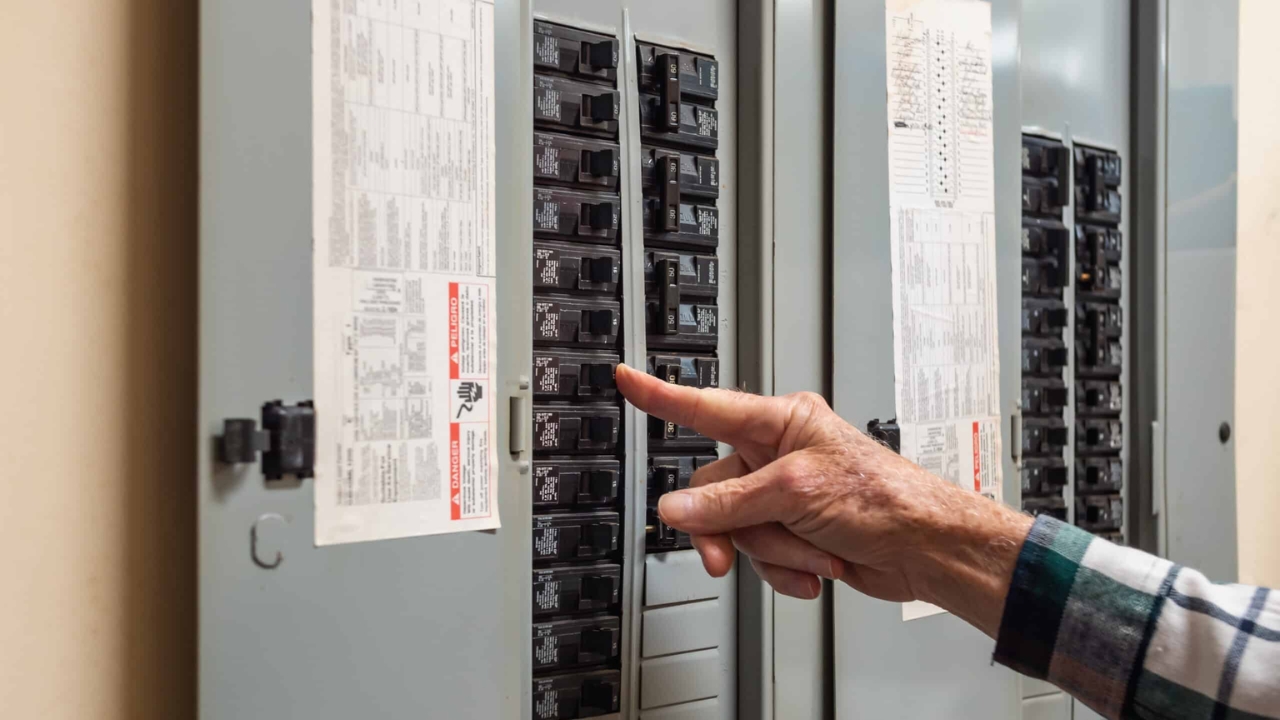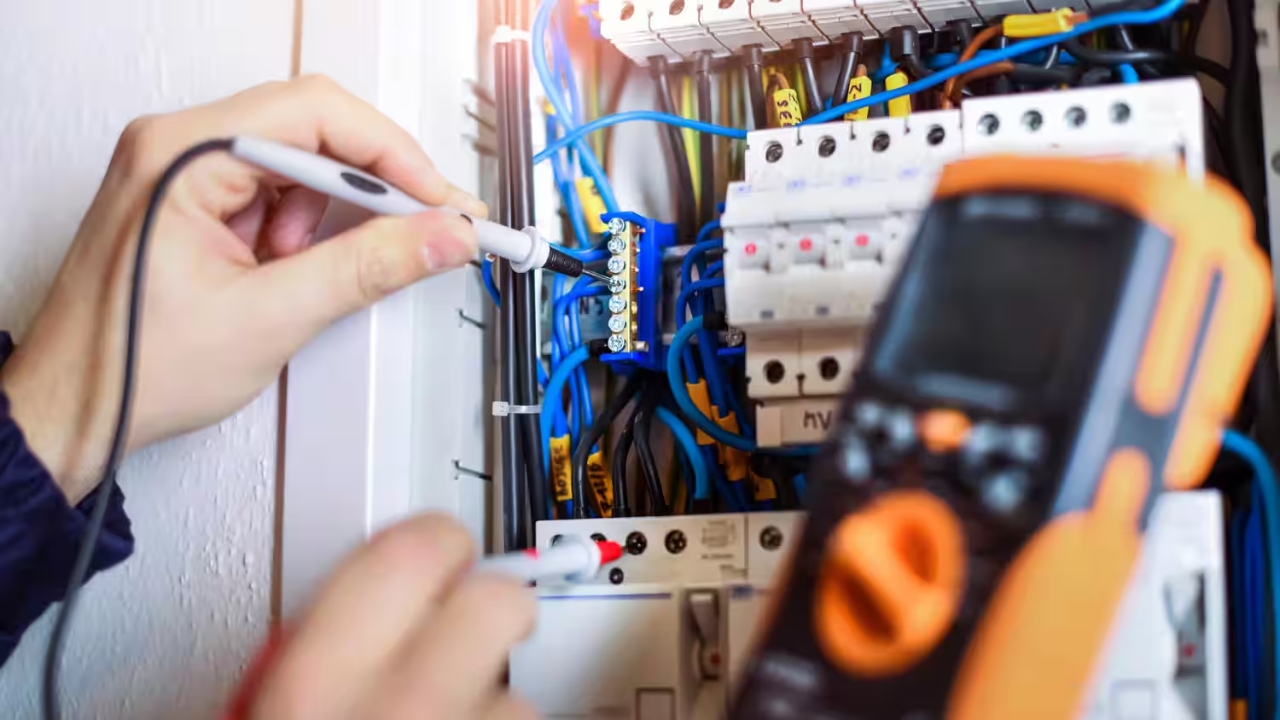Are you still in confusion whether to use a fuse box or a circuit breaker for your house? You are not the first one to be left in such confusion. Both work towards protecting your electrical system but bear different pros and cons.
Read the article to know the differences between the two systems so that you can strategically choose for cost, safety, and ease of use.
Let’s dive.
Understanding Circuit Breakers and Fuse Box

Circuit Breaker
A circuit breaker is a device that, due to its built-in features, functions as a safety against overcurrent or a short circuit. It works like a switch which opens or closes an electrical circuit, hence stopping electrical flow to the rest of the building whenever there is an overload of current within the circuit, as well as during a fault, in order to avoid damages within the electric system or fire in the building.
Fuse Box
A fuse box, or a fuse panel, is a box-like that contains fuses or circuit breakers that control the amount of electrical energy supplied to the various parts of the building. Fuse boxes are normally situated in utility rooms and basement floors.
How do Circuit Breakers and Fuse Boxes Work?

Circuit Breakers:
A circuit breaker functions on the principle of monitoring the electrical current flowing through a circuit. The breaker turns off the supply during mechanisms like overload or short circuits. This is what happens during those processes:
- Detection of Overload: Within the breaker is an element that is thermal, a slender rod made of two different metals. It bends when heated. When the current is high, the strip heats up and bends, leading the thermal element to trip the breaker. The faster the metal bends the more current there is, which disconnects the supply.
- Protection from Short Circuit: During a short circuit, where wires touch, the breaker has an electromagnetic mechanism. This is because the electromagnet is stronger during increased current. When a specific level is reached, it pulls an arm made of metal that trips the breaker. This causes the supply of electricity to be disconnected instantly.
- Resetting the Breaker: After a breaker trips, you can reset it by flipping the switch back to the “on” position. This feature makes circuit breakers reusable, unlike fuses.
Fuse Boxes:
A fuse box provide protection to the electrical circuits in your house. This is how the fuse operates:
- Current Flow: When electricity is present in a circuit, the fuse allows the passage of electricity through its thin metal filament. This is the process when electricity flows. This wire has a lower melting point than the temperature of the current. Hence, the filament is designed that way.
- Melting and Breaking the Circuit: When voltage is applied and there is a short circuit or overload in a specific fuse, excess current flows through the filament of the fuse and it melts. As a result, the melted wire opens the circuit and power is cut off from that specific electrical circuit.
- Replacing The Fuse: Fuses, unlike circuit breakers, do not reset themselves. The melting of the fuse wire needed a replacement.
Both systems serve the same purpose, which is to protect the house from short circuits but given their different workings, breakers reset automatically whereas the blown fuses within fuse boxes are replaced.
Main Differences of Circuit Breakers and Fuse Box

Reusability
If a circuit breaker stops working due to a fault in the electrical system, it is designed to be reset. This means that after the issue is resolved, you can just switch it back on. Restoring power to the electrical circuit with the flip of a switch. This makes them much more convenient and cost effective, especially over a long period of time within homes or businesses.
Unlike manual switches, fuse boxes have a complex installation process. These units must be located in dry and protected locations to prevent damage and exposure to moisture. With this protection, these boxes are also more expensive and robust than switches.
Principle of Operation
Depending on the amp rating, various circuit protections are provided in electrical installations. Circuit Breaker also consists of thermal and magnetic protections continuously monitoring the electricity supply. When the maximum set limit of current is exceeded, these protections trip the supply to the system. This safeguard prevents damage to electrical devices like wiring, motors, etc.
Unlike breakers, fuses need to be ‘cleared’ or replaced when they trip. They contain a thin metal wire that remains intact during normal conditions but gets melted when too much current is supplied. A blown fuse prevents current from passing through the circuit and acts as a safeguard against overheating and damage to other components within the circuit.
Operation Mode
Fuse boxes have a cut-off feature which works automatically and is best suited for protecting devices from currents exceeding their limits. Fuses need to be replaced once damaged, which means a broken fuse does not allow power to flow through a working circuit. Before installing a fuse, the source of damage needs to be identified and rectified. These make fuse boxes unsuitable for temporary situations.
Unlike manual switches, fuse boxes have a more demanding installation process. These units must be situated in dry and protected locations to avoid damage from moisture. With this protection, these boxes are also more expensive and robust than switches.
Cost Part
Circuit breakers are expensive but their long-term cost is lower. Since they can be reset and reused, you don’t have to replace them regularly. This makes them more economical for large or long-term installations.
Fuses are cheaper to install but require frequent replacements. Over time, the cost of replacing blown fuses can add up, making them a less cost-effective solution for ongoing protection.
Uses
Circuit breakers are commonly found in modern homes, offices, and industrial settings, where higher capacity and reusability are essential. They provide flexible, long-term protection for electrical systems with heavy usage.
Fuse boxes are more common in older homes or as backup protection in certain appliances. They’re being phased out in favor of circuit breakers but still offer basic protection for smaller systems or low-power applications.
Pros & Cons of Circuit Breaker and Fuse Box

Pros of Circuit Breaker
- Cost Effective: You don’t have to buy a new circuit breaker every time it faults, you can reset them. This makes them cost effective as well as convenient.
- Responsive: Breakers are smart and responsive. They trip immediately when an overload or a short-circuit is detected. This minimizes damage to the electrical system.
- Amplified Protection: They provide smarter overload and short-circuit protection to the electrical system and as a result are more reliable.
Cons of Circuit Breaker
- Greater Princely Cost: The cost of purchasing a circuit breaker is greater than the rest of the systems. They are more expensive than fuses, especially in high-capacity systems.
- Dimension: They occupy larger space. They need more room in the fuse box which makes them less compact than fuse based systems.
Pros of Fuse Box
- Simplicity: Because of fewer components to worry about, fuse boxes are easy to maintain.
- Reliability: For systems with minimal load, fuses are effective since they are not complicated and dependable for overload protection.
Cons of Fuse Box
- Non-Reusable: With continuous use of a fuse box, additional maintenance and replacement fees are expected as costs due to a blown fuse replacement being incurred.
- Slower Response: Compared to circuit breakers, fuses are slow to work because their internal fuse wire must first melt, delaying their ultimate action.
- Protection: In comparison to other protective switches, fuses have limited protection against short circuits and more sophisticated electrical problems, only guarding from overloads
Conclusion

The circuit breakers are preferred over the fuse box as they are easier to use and much safer. when selecting the best choice for your home or workplace, assess your budget, and electrical requirements and provide the convenient solution for your home.
In order to have the right circuit breaker for your needs, you can contact us now.
FAQS
Why is the circuit breaker the standard?
Able to provide safety, dependability, and ease of resetting, circuit breakers have become the standard. Unlike fuses that must be replaced and have more maintenance cost, circuit breakers have been designed to be reused. Along with being qualified for modern electrical systems, they also provide protection from overloads and short circuits.
How can I determine whether I have a fuse box or circuit breaker panel?
Check the electrical panel first. If it has a toggled set that can be switched ON and OFF, then it is a circuit breaker panel. If it has cylindrical or glass parts that need to be replaced once blown, then it is a fuse box.
Why does a fuse explode or a circuit breaker trip?
The fuse blows off or the circuit breaker switches off when the electrical current exceeds the predefined maximum safe limits. In fuses, a metal wire melts due to overheating and breaks the connection. In circuit breakers a thermal, or electromagnetic switch is activated, which breaks the connection to the power supply when it is overloaded.



